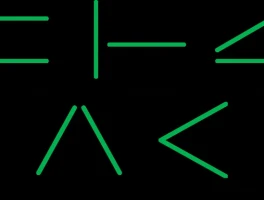So, SharpLink Gaming is dropping $200 million of its ETH treasury onto Linea. The press release is a masterclass in corporate back-patting, a symphony of buzzwords like "institutional-grade," "composability," and "risk-managed." They’re painting this as the moment Wall Street finally puts on its big-boy pants and wades into the DeFi pool.
Give me a break.
Before we get lost in the jargon-laced fog, let's get one thing straight. Joseph Lubin is the founder of Consensys, the company that bootstrapped the Linea network. Joseph Lubin is also the Chairman of SharpLink, the company "bravely" deploying $200 million onto Linea.
This isn't some groundbreaking, organic collaboration between two independent pioneers. It's a glorified inside job. It's one guy's company handing a giant bag of money to his other company's pet project to make it look legitimate. You can almost picture the Zoom call: a grid of perfectly coiffed execs nodding in unison as they "pioneer" a deal that was probably sketched out on a napkin at a shareholder meeting.
Is any of this illegal? Offcourse not. But is it the revolutionary moment for "institutional adoption" they're selling it as? Please. It’s a closed loop, a self-serving ecosystem designed to generate headlines and pump the value of their interconnected assets.
The Illusion of a 'New Pathway'
Let’s deconstruct the sales pitch. SharpLink's Co-CEO, Joseph Chalom, says this move enables them to "access the best of Ethereum’s staking, restaking and DeFi yield, while maintaining the institutional safeguards our stockholders expect."
My translation: "We want to chase those juicy DeFi yields like all the anonymous degens on Twitter, but we're a publicly traded company, so we have to wrap it in a thousand layers of compliance and call it innovation." The "institutional safeguard" here is Anchorage Digital Bank, a federally chartered crypto bank. They're the designated adult in the room, the chaperone ensuring the kids don't lose the entire treasury on a new dog coin.
This whole setup is a perfect metaphor for the current state of crypto adoption. It's not about decentralization or permissionless access anymore. It's about creating walled gardens that look and feel just like the old financial system, just with more complicated tech and a veneer of "disruption." They're trying to draw la linea in the sand between the messy, chaotic world of real DeFi and this new, sanitized corporate version.

And who are the other "partners" in this grand collaboration? We've got ether.fi for staking and EigenCloud for restaking. Sreeram Kannan, Eigen Labs' founder, talks about enabling "verifiable AI, insured DeFi and trustless infrastructure." It all sounds incredible, doesn't it? It also sounds incredibly complex and, dare I say, risky. Restaking is the hot new thing, but it's basically financial Jenga—stacking layers of risk on top of each other in the hope that the whole tower doesn't collapse. What happens when one of these "Autonomous Verifiable Services" on EigenCloud gets exploited? Does Anchorage's "safeguard" cover that, or does the whole $200 million stack go poof?
These are the questions the glossy press release conveniently forgets to ask.
A Symphony of Self-Congratulation
The whole announcement feels less like a business move and more like a carefully orchestrated piece of theater. Every player gets a line to praise every other player. Consensys praises SharpLink. SharpLink praises Linea. ether.fi is "honored" to be chosen. EigenCloud is "excited" about what this "enables tomorrow." It's a nauseatingly perfect circle of corporate synergy.
This is a bad idea. No, 'bad' doesn't cover it—this is a five-alarm PR stunt disguised as a treasury strategy. They're taking a massive corporate treasury and plugging it into the bleeding edge of DeFi protocols, a place where things break, and they break spectacularly. All the "qualified custodians" in the world can't protect you from a smart contract bug.
And the obsession with adding "AI" to everything is just getting exhausting. It's the 2025 version of adding "dot-com" to your name in 1999. Suddenly, staking ETH isn't just about securing the network; it's about powering "a new generation of services secured by ETH, like verifiable AI." What does that even mean in practice? They don't say. It's just more word salad to make the SEC filing look more impressive. It ain't about building the future; it's about building a narrative.
They want us to believe this is the dawn of a new, responsible era of onchain finance, and for a second you almost...
Then again, maybe I'm the crazy one. Maybe this perfectly manicured, interconnected, self-referential model is the only way institutional money will ever touch this stuff. Perhaps the messy, decentralized dream was just a naive fantasy, and the future is just a crypto-flavored version of the same old boys' club.
But what happens when the first major "institutional-grade" DeFi strategy blows up? Who takes the fall then? Will all these partners still be so eager to praise each other when they're sitting in front of a congressional hearing?
Just Follow the Money
Look, I'm not saying this is guaranteed to fail. But let's call it what it is. This isn't a bold step into a decentralized future. It’s a calculated, incestuous play to legitimize a new platform using a friendly partner's massive treasury, all while dressing it up in the language of revolution. They're building a Potemkin village for Wall Street, hoping the suits are too dazzled by the "verifiable AI" and "composable primitives" to notice that the whole town is owned by the same guy. The real product here isn't yield; it's the headline.


